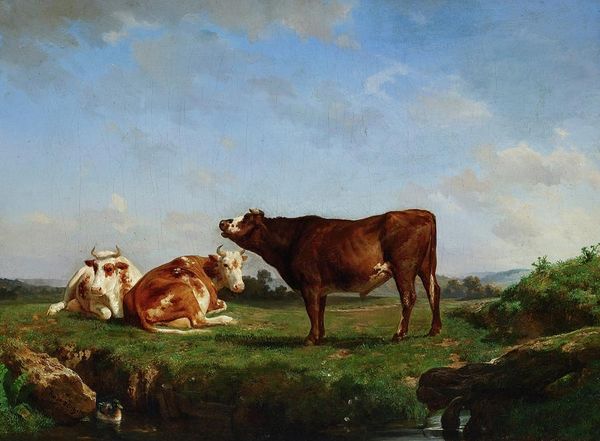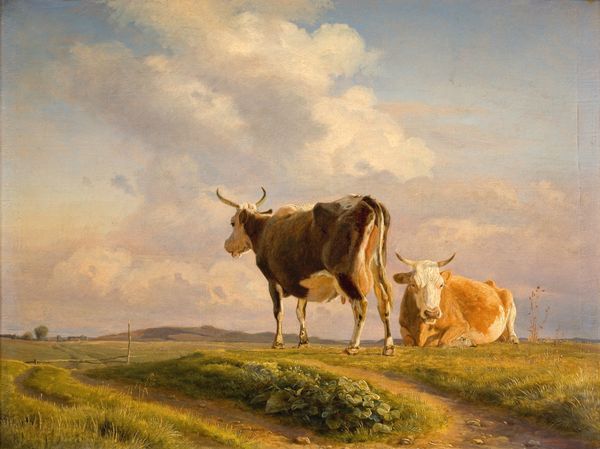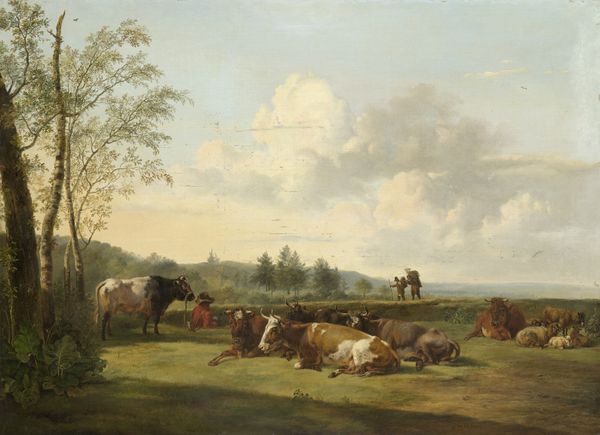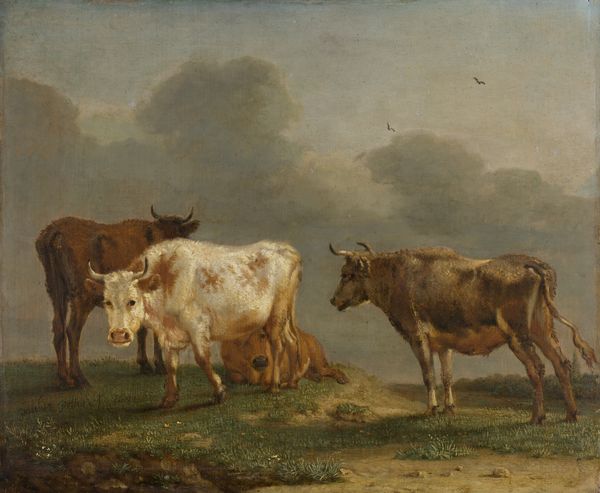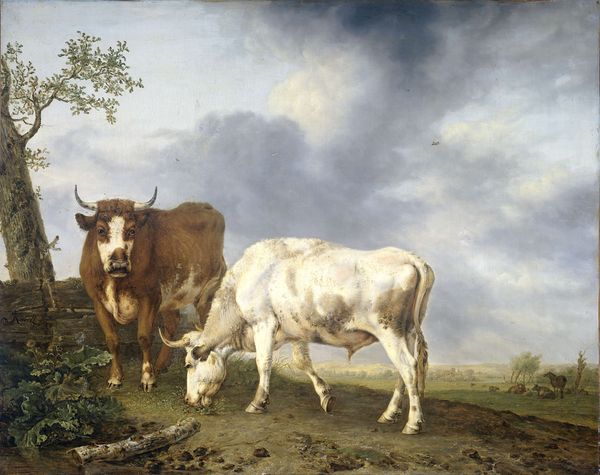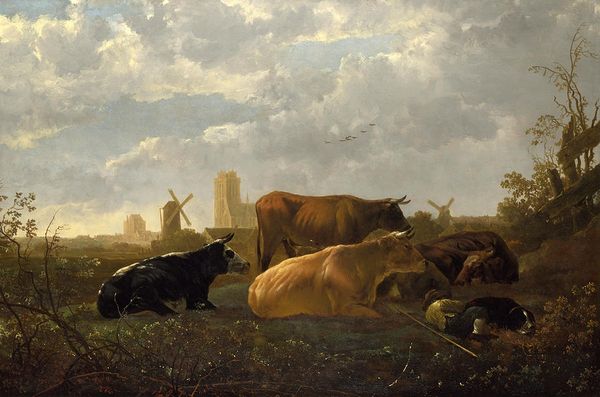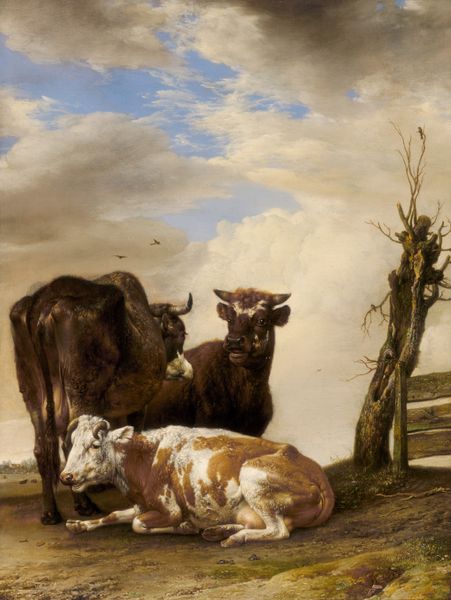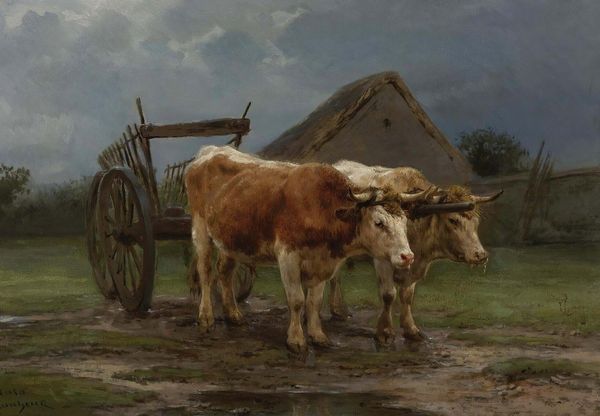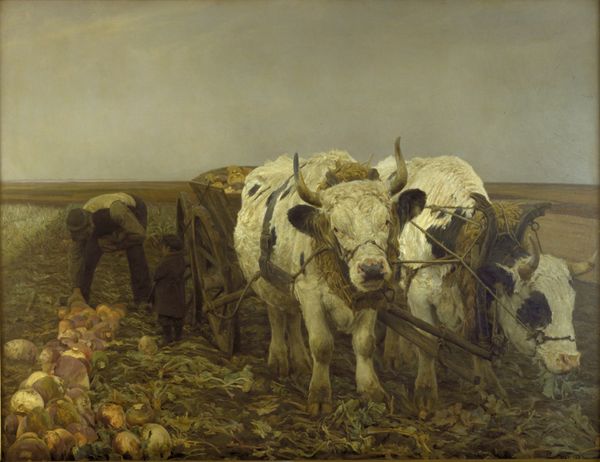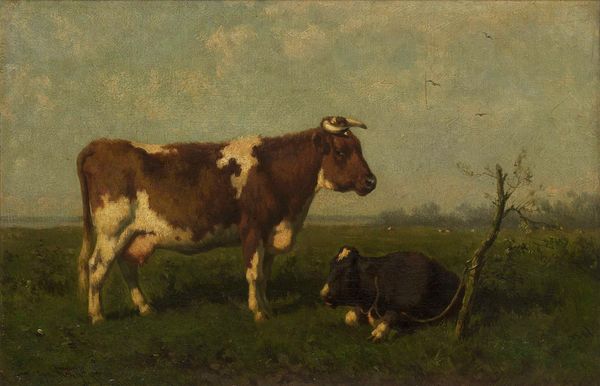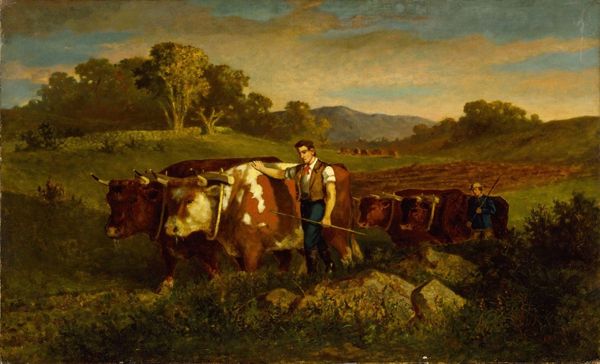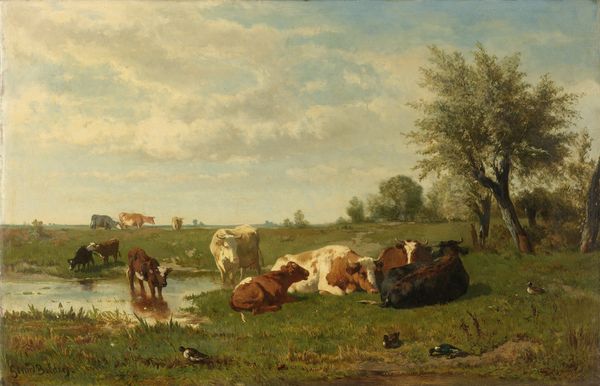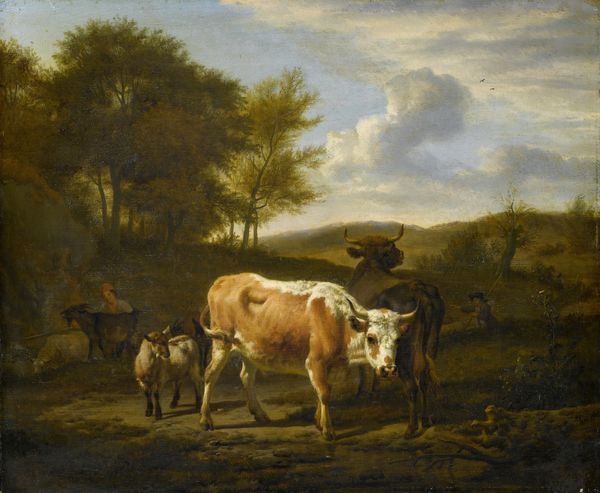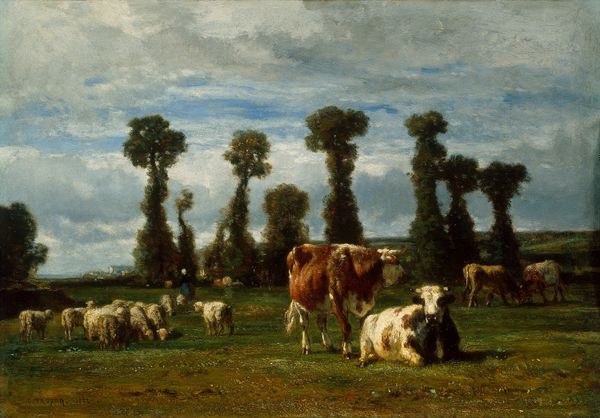
painting, plein-air
#
painting
#
plein-air
#
landscape
#
figuration
#
romanticism
#
genre-painting
#
history-painting
#
academic-art
#
realism
Copyright: Public Domain: Artvee
Curator: Let's discuss Rosa Bonheur's "Ploughing in Nevers," painted in 1849. It offers a glimpse into rural life. Editor: It’s strikingly monumental, isn't it? The scale and earthy tones give a sense of grounded realism, while the sheer labor pulls your focus right into that dark furrow. Curator: Precisely. Bonheur, bucking convention, dedicated herself to animal painting, studying anatomy meticulously. This piece highlights the shift towards realism, a stark contrast to the romanticized views of peasantry we often see. Her defiance challenged artistic norms. Editor: And look at the soil! The sheer amount of detail she dedicates to it – it looks damp and heavy, clearly worked. I'm thinking about the cost and effort required to produce a canvas of this size and complexity back then; it signifies Bonheur's investment in celebrating that type of agricultural work, along with her commitment to craftsmanship, which itself demanded skill and toil. Curator: Absolutely. "Ploughing in Nevers" made Bonheur a star at the Salon. There was also a growing sentiment of valuing rural labor during the mid-19th century, fueled by both socialist ideals and a romanticization of pre-industrial life. Bonheur successfully tapped into this. Editor: But it's not romanticized; it presents this work as it is. We see that this team of laborers (both human and animal) makes slow, plodding progress together. It feels devoid of any heroic theatrics and full of quiet focus and muted desperation to eke sustenance from unyielding material. I want to touch that mud to fully understand it. Curator: Yet, its monumental scale elevates it beyond genre painting. By invoking traditions of history painting with an agricultural subject, she made a political statement. Her focus isn't on folklore, but on an actual element and its importance within France's history. Editor: Which makes me reconsider the artistic act, itself, and wonder how artists make choices about the tools, the surfaces and means by which to deliver images into the cultural sphere and thus define "History". What determines lasting value and our perceptions of such a value chain? Curator: Ultimately, "Ploughing in Nevers" stands as both an impressive artistic feat and as an artifact of social commentary. Editor: Agreed. This really invites us to contemplate the tangible nature of artmaking and farming and their inherent intersection in value creation.
Comments
No comments
Be the first to comment and join the conversation on the ultimate creative platform.
